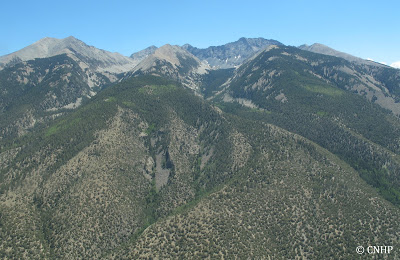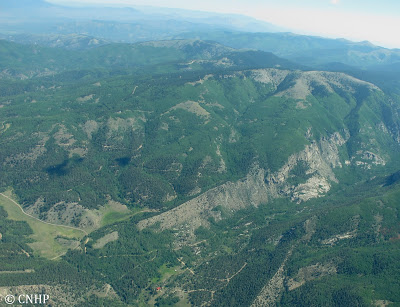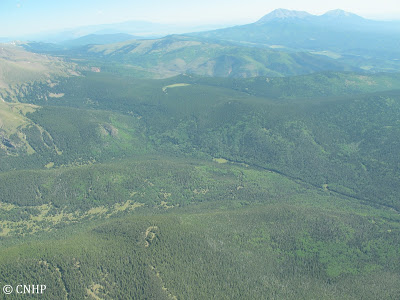During a June flight with Lighthawk volunteer pilot Steve Paul, CNHP’s Renée Rondeau got a tour of many of the ecosystems in the southern Colorado (Part 1, the San Luis Valley).
The Sangre de Cristo Mountains
The Sangre de Cristos are a steep, narrow mountain range along the eastern boundary of the San Luis Valley. The prominent massif of Blanca Peak anchors the central part of the range. Further south, the southern Sangre de Cristos are called the Culebra Range, and form the western boundary of the Park Plateau in northern New Mexico.
These mountains support narrow bands of shrubland, woodland, and forest types with increasing elevation, and include alpine and barren rock habitats at the highest elevations.

Slopes below Blanca Peak illustrate how vegetation types change with elevation in the Sangre de Cristos, from pinyon-juniper at the bottom to alpine at the top.

Above the pinyon-juniper, stands of aspen and mixed conifer dominate.

Near Whiskey Pass, spruce-fir forest clusters below the alpine tundra.

Second verse, same as the first. Once over the mountain ridge, on the east side of the Sangre de Cristos, we head back down through the different forest types. The Spanish Peaks are visible in the upper right.

Back down at the pinyon-juniper. The view north along the Stonewall, a volcanic dike that goes on for nearly 30 miles.
More to come in part 3, as Renée and Steve venture into northern New Mexico.




